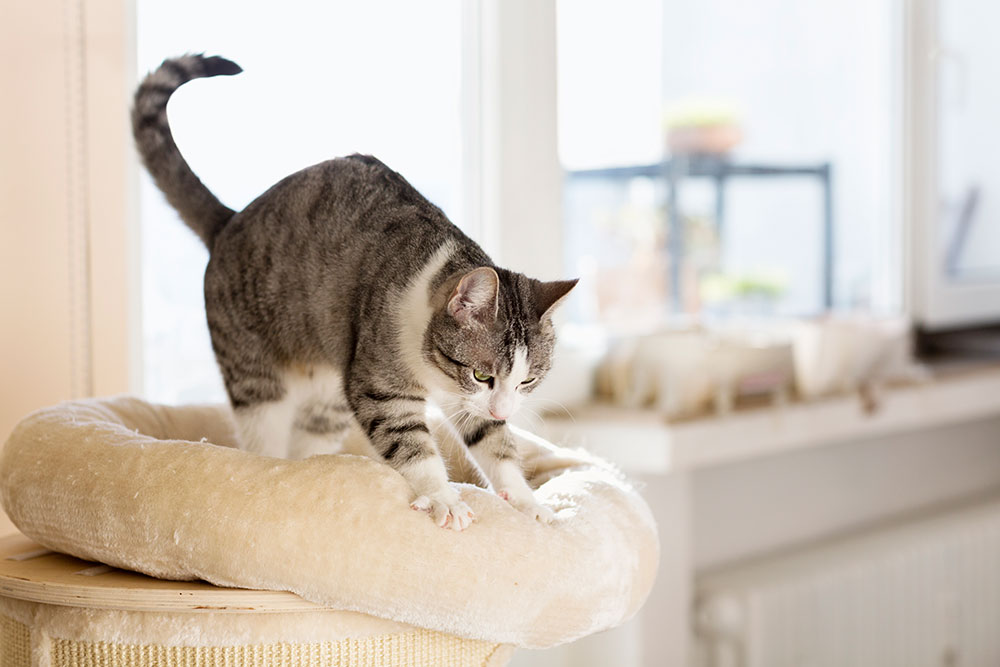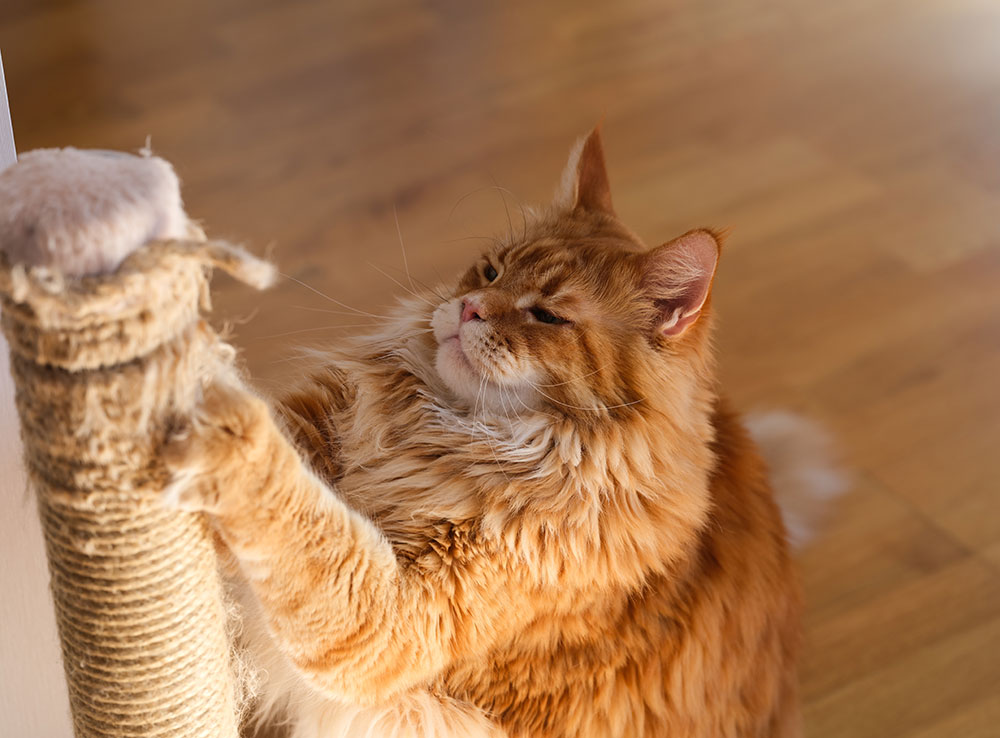Why Do Cats Knead?

Cat owners are likely familiar with their feline friend’s kneading behavior, or what many cat owners affectionately refer to as “making biscuits.” Similar to the way a baker pushes and pulls dough before baking, a kneading cat massages or repeatedly pushes their toes into a soft or cushioned surface, such as a plush blanket, fellow pet, or warm human lap.
You have likely seen cats knead, and you may have wondered why they do this. Some pet owners may worry their cat’s behavior signals a medical problem, while others want to know how to stop their four-legged friend from contentedly sinking their sharp claws into their skin.
Regardless of your reason for wondering why cats knead, you can rest assured that the behavior is completely normal, and one that you should allow your feline friend to express. Learn why your cat kneads and how you can redirect destructive kneading.
Why cats knead
Kittens knead their mother when nursing to stimulate milk production. Feline experts theorize that adult cats knead to re-create the feel-good hormone release that occurs during nursing. Kneading brings them comfort and helps them release tension and relax. Other reasons for kneading include:
- To get comfortable — Wild cats knead grass to create a comfortable resting place. The same is true for domestic cats, who often knead soft objects before lying down. Once they snuggle in, a cat may continue kneading to convey their contentment.
- To show affection — Cats may knead their favorite people or other household pets to show affection as they did with their mothers.
- To scent mark — Kneading their favorite bedding, places, or people leaves scent markings from glands in the feet, effectively claiming them as their own.
When is kneading abnormal in cats?
If your cat kneads excessively or suddenly kneads less than usual, it could mean that they don’t feel well. Because kneading is a comforting action, cats who feel stressed or are experiencing pain may knead to soothe themselves. If you notice a significant change in your feline friend’s behavior, schedule a visit with your veterinarian to rule out a medical or behavioral problem.
Addressing problem kneading in cats

Most of the time, kneading is adorable. However, kneading can become a problem if your cat’s claws are damaging your furniture or injuring household members. When this happens, you should never yell at or punish your cat. Remember that kneading is a natural behavior, and your cat needs an acceptable outlet to express their instincts.
Rather than preventing your cat from kneading, you can redirect their behavior to an appropriate location. Choose a thick, plush blanket and designate it as your cat’s kneading surface. When you see your cat kneading something you don’t want destroyed, try to attract their attention to the blanket or use a toy to redirect the behavior to something appropriate. If your cat kneads your lap, keep a blanket nearby to protect yourself when your feline friend approaches for cuddle time.
You can also take steps to disarm your cat’s nails. Regular nail trimming prevents sharp points that snag furniture and skin. Provide multiple scratching posts throughout your home to help redirect your cat’s energy to another activity. A Feliway pheromone diffuser may also help reduce problem kneading by increasing your cat’s overall well-being. If your cat’s destructive kneading continues, consult your veterinarian.
We may never figure out some cat behaviors, but feline experts agree that kneading is completely normal. Allowing your cat to express their instinctual behaviors in a healthy and non-destructive way can help keep them happy and content. If you’re concerned about your cat’s behavior, contact your local AAHA-accredited veterinarian.



